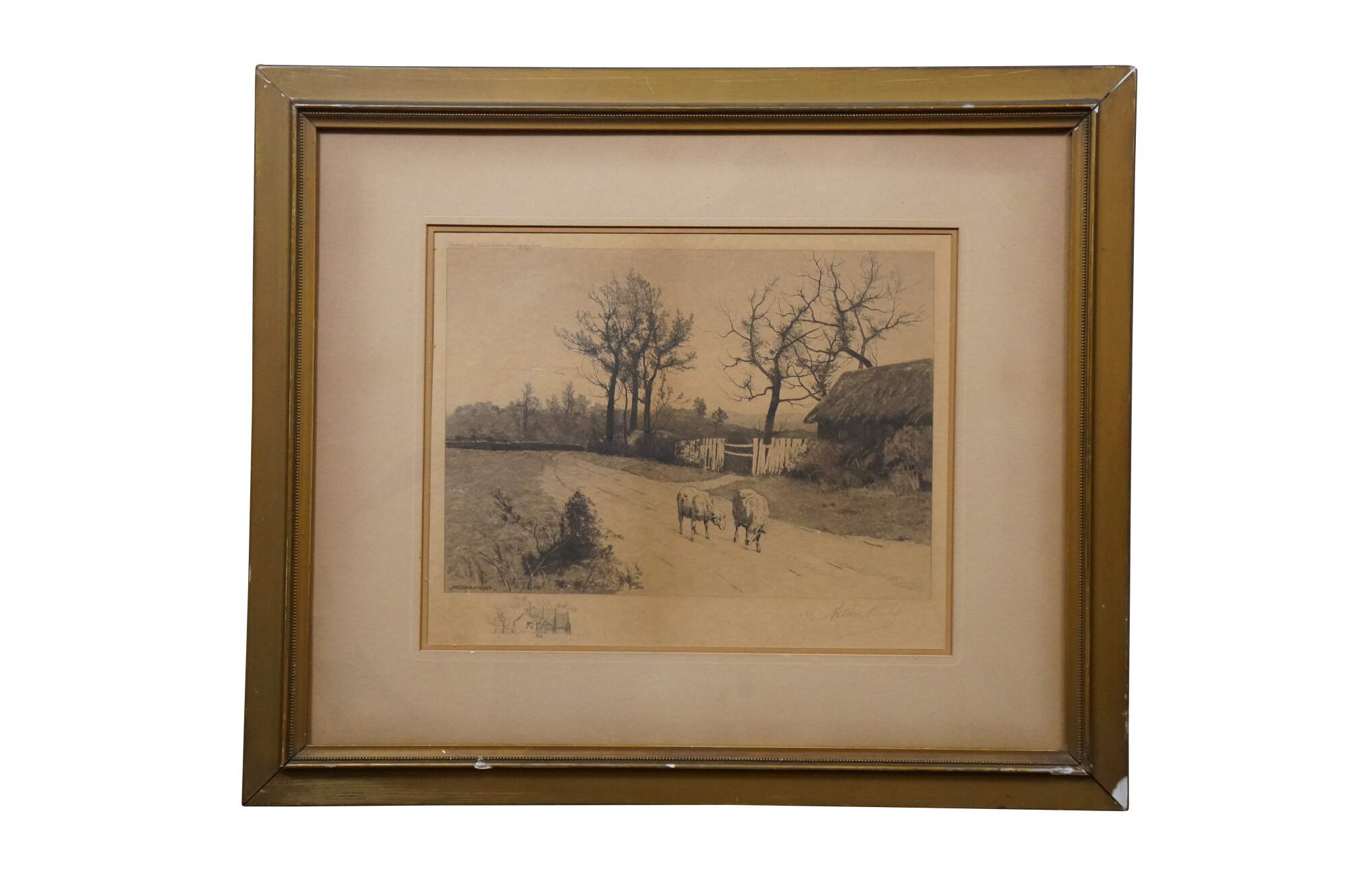
Shipping:
Free Shipping Included
Delivery:
Estimated 2-15 Business Days
Payments:
Credit Card, Check, Cash, PayPal, Apple Pay, Venmo
Returns:
30 Days 100% Money Back Guarantee, Buyer Pays Return Shipping
Description
Rare late 19th century black and white etching by Arthur Hoeber. Landscape of a pair of sheep walking down a country lane by a small thatched cottage. Published by Fishel, Adler & Schwartz, New York. Pencil signed, lower right. Remarke of a farmhouse, lower left. Signed in plate, lower left. Giltwood frame with beaded detail; white mat.
Arthur Hoeber (July 23, 1854 New York City – April 29, 1915 Nutley, New Jersey) was an American painter best known for his writing on art-related subjects. He studied with James Carroll Beckwith at the Art Students League of New York, and with Jean-Léon Gérôme in Paris at the École des Beaux Arts. He exhibited for the first time at the Salon in 1882 (“Sur la Grande Route”; in 1885 his offering was “Le Pain Quotidien”) and was a contributor to most American exhibitions. While well known as a successful painter, his reputation perhaps rests on his art criticism. He was art director for the New York Times for three years and was assistant editor of The Illustrated American for one year. He later was art critic for the New York Globe and Commercial Advertiser. He was also widely known as a lecturer on art subjects. He was a member of the International Art Association of Chicago, and was elected an associate of the National Academy. During the last years of his life, Hoeber resided on The Enclosure, a street in Nutley, New Jersey, that had long been the home to many artists. His popular writings include The Treasures of the Metropolitan Museum of Art (1892) and Painting in the Nineteenth Century in France, Belgium, Spain and Italy (1901).
Condition
Wear and distressing, foxing, discoloration, damage to frame, no glass
Dimensions
25" x 0.75" x 21" / Sans Frame - 15" x 12" (Width x Depth x Height)
You May Also Like